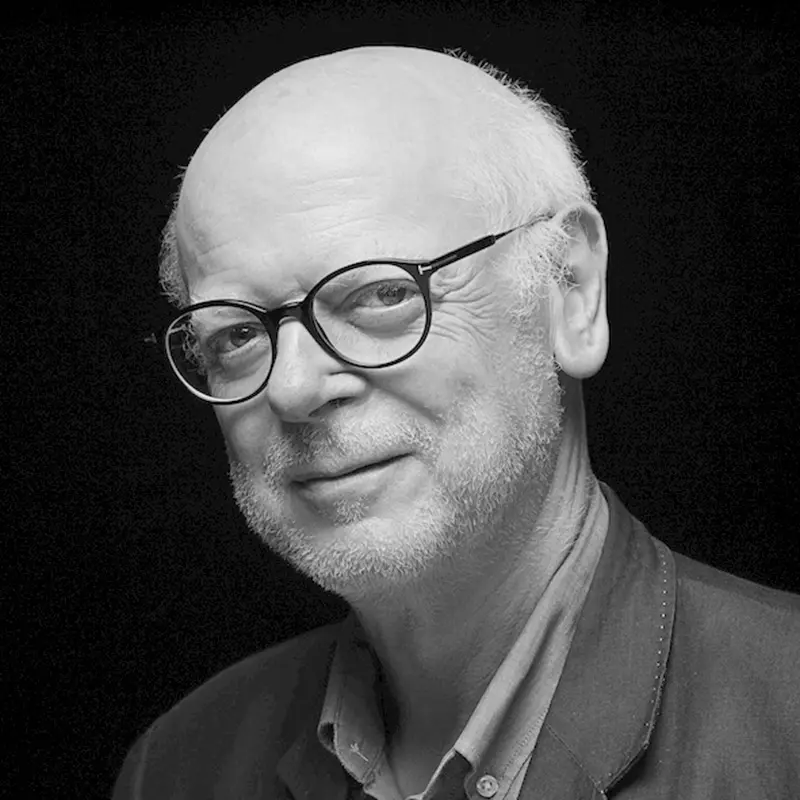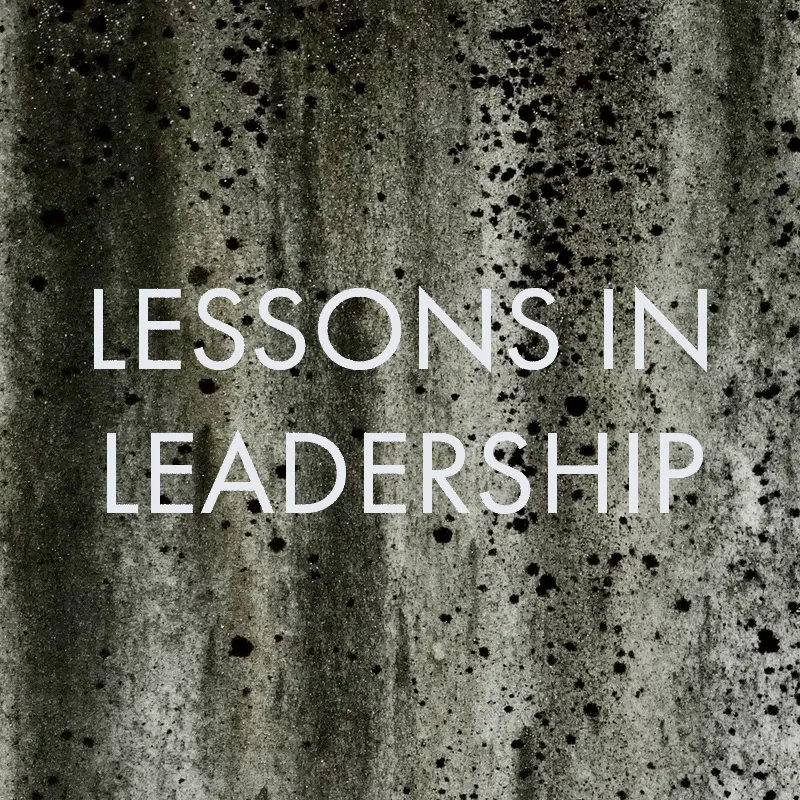
Crushing Agendas
Paul Hyett
Founder of Vickery Hyett Architects
January 10, 2024
Paul Hyett examines history to explore the inexorable connections between politics, architecture and sustainability.
Ever since the early cave settlements, building was about protection from enemies and the environment. The Middle Ages saw the zenith of defensive structures and settlements, but thereafter, in Europe and afar, artillery power would gain a superiority that rendered castles and walled cities redundant. Meanwhile, the scale of military conflict continued to escalate, culminating in the two World Wars of the twentieth century.
But however dangerous the enemy or savage the conflict, from the last Ice Age onward, our host environment consistently offered a benign and stable context for humanity’s development and growth: clean air and water with an abundance of flora and faunae.
In ecological terms, we lived sustainably.
A New Era — and a New Challenge
Until, that is, the Industrial Revolution, which, through its carbon emissions and pollution, marked the beginning of the greatest threat to the environment ever faced by humans: humans.
Now, despite the sophisticated technologies that are rapidly making sustainable living possible, a new menace has emerged: Our socioeconomic and political system has faltered, and democracy is threatened.
Western politics are moving in the wrong direction: Witness the shifts away from collaboration toward isolationism and populist governments. Witness the confusing rhetoric from would-be leaders who irresponsibly strike fear into electorates by demonising their opponents under the collective taunts of “fascist, Marxist, communistic, socialistic, liberal and radical-left thugs.” Witness the dawn of a new age of political chaos.
Such politics provide nothing in the way of solutions. But we must save democracy, or architecture and city planning will fail their most substantial challenge: responding to the ecologically responsible design agenda. It is time to crush individual agendas in favour of collective, connected ones. This new common agenda is, and will be, architecture’s greatest challenge.
Politics Shape Architectural Endeavour
The recent past offers robust lessons about enlightened politics. Let’s start with Cordell Hull, secretary of state under Franklin D. Roosevelt, who wrote in his 1948 memoir:
“I saw that … wars were often largely caused by economic rivalry conducted unfairly. … If we could get a freer flow of trade … thereby eliminating the economic dissatisfaction that breeds war, we might have a reasonable chance for lasting peace.”
Hull and Roosevelt were ardent adherents of the progressive Wilsonian belief that free trade would promote not just prosperity but also peace. Woodrow Wilson, America’s 28th president whose ultimate legacy was the League of Nations, would not live to see the maelstrom that would again consume Europe so soon after World War I. He died in February 1924.
It is time to crush individual agendas in favour of collective, connected ones. This new common agenda is, and will be, architecture’s greatest challenge.
But remember what followed: the Wall Street crash of 1929, the parallel “uncertainty effect” that so constrained consumer spending, the bank failures and collapses that followed, and the Smoot-Hawley Tariff, which triggered the awful web of international controls that would reduce world trade by a monstrous two-thirds in the three years to 1933. All these, together with the errors of the Federal Reserve, would herald the Great Depression and the 10 years of international economic woe that provided the backdrop to, if not the pathway into, World War II.
Through all this, architectural endeavour was strangled.
Architecture’s Contexts
Wilson’s vision of “liberal internationalism,” which supported the formation and development of international institutions, open markets, cooperative security and liberal democracy, would thus be shelved until a new generation of leaders could affirm, upon securing the submission of the Axis powers, that economic cooperation was the only way to achieve global peace and prosperity.
The first massive steps in that process, formally articulated as the Atlantic Charter, were the MacArthur and Marshall Plans, which led to the major restructuring of the German and Japanese economies, the revitalisation of their industries and the reengineering of their sociopolitical cultures. Never had the victors in war been so generous to the vanquished. Never had architecture, in facing the challenges of post-war reconstruction, been so tested.
Those were the contexts against which we have enjoyed freedom, relative peace and prosperity, and against which social, commercial and cultural conditions architectures have for decades flourished. There have, of course, been some bumps and hiccups along the way. And there has also been a steady shift away from state-sector delivery and operation of so much of our infrastructure: In the U.K., health care and housing have increasingly been serviced by the private sector. But, courtesy of Wilson’s influence, we have also transitioned to globalised supply chains.
Global Markets: The Delivery Focus
Regrettably, despite its benefits in terms of Wilson’s agenda, globalisation has all too often curtailed local manufacturing and supply, whether that be furniture, computers, cars or clothes. Even food: During my grandparents’ lives, ingredients travelled just eight miles before arriving at the table. Today, in the U.K., the average food item journeys 1,837 miles to get from farm and vineyards to plate. That same metric is 1,500 miles in the U.S., 1,864 in Canada and a staggering 43,496 miles per dish in Melbourne, Australia!
I am not seeking to make a case here for greater ecological awareness, or the role architecture and urban planning should play in reducing our carbon footprint. You understand that! It’s on delivery I want us to focus. That is where economic context is activated.
For years, it was fine to promote Wilsonian global trade as the platform from which international peace could develop. But the problems that have arisen along the way are now easily visible, and herewith, the ultimate irony: Because of their adverse impact on home employment, the very economic programmes that facilitated the spreading of wealth and opportunity across international boundaries — all in pursuit of harmony and peace — now threaten sociopolitical order, democracy and even peace in our own homelands.
The very economic programmes that facilitated the spreading of wealth and opportunity across international boundaries — all in pursuit of harmony and peace — now threaten sociopolitical order, democracy and even peace in our own homelands.
Architectural Relevance
But what has all this got to do with architecture? Precisely this: A nation’s health is inextricably linked to the provision and quality of housing and employment.
In Britain, this was recognised by Neville Chamberlain, who in 1938 promised “peace in our time.” Prior to serving as prime minister, he had been Minister for Health. With an acute understanding of local government and social services (his father, Joseph, is often hailed as the “father of local government”), Chamberlain was convinced that the health of any community was “ruled by housing” and that “housing was made up of social strands which could not be separated: wage standards … employment and transportation.”
Fast-forward to today and we see the mighty machinery of international trading markets destroying local employment in so many of our towns and cities. How easy it is for international corporates to shift finance, ideas, management and even raw materials around the world in pursuit of cheap, obedient and deregulated workforces, so often to devastating effect.
In a kind of reversal of the Wilsonian imperative of levelling the playing field to the benefit of all, international trading is now disadvantaging our home economies to a point of social disorder, as large manufacturing communities are deserted by corporates who shift production offshore. This fuels the rise of the unsavoury populism that now confronts us centre stage.
Architecture’s Challenge: Political Cooperation
The biggest crisis humankind has ever faced — and architecture’s historical imperative — is the agenda for ecologically responsible living and design. If we destroy our environment, which we are perilously close to doing, the essential purpose of architecture — safe shelter — is redundant. One of the most important contributors to the alleviation of that damage is the reduction of our carbon footprint through environmentally responsible architecture. Achieving that needs focus by enlightened governments and international cooperation at the highest level, big-time and fast.
That means a reversal of current sociopolitical trends. Denial, misinformation, conspiracy theories (global warming is real!), an inability to achieve accord around truth within our own communities, isolationism and opposition between governments across the world stage all combine to get us nowhere and derail any chance for architecture to serve its fundamental purpose: to provide the ecologically responsible infrastructure and built fabrics within which our communities can exist in harmony with their host environments.
Without that larger purpose — and its pursuit — our world faces unparalleled chaos and strife.
Paul Hyett is the founder of Vickery Hyett Architects, past president of the RIBA and a regular contributor to DesignIntelligence. He is a senior fellow in the Design Futures Council.




